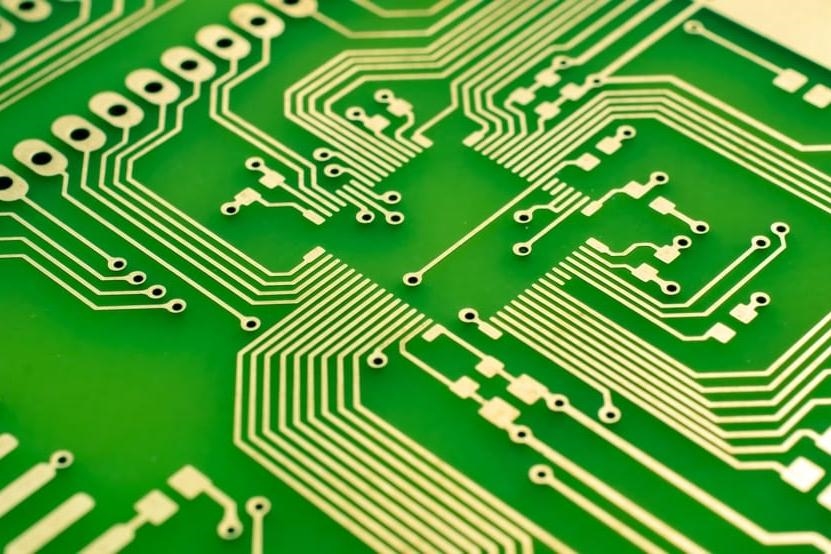In the previous article, we discussed what via is, what type of via we have in PCB design, and how to choose a suitable via for your project.
Today, we will further discuss the knowledge related to via covering. After choosing the right via type, we’ve encountered a new issue: how to choose the appropriate via process. Take your time to read this article, and I’ll provide you with the answers you’re looking for.
The via covering process in PCB manufacturing is an essential step used to treat and modify the vias in a circuit board, particularly in multi-layer PCBs where vias create electrical connections between layers. This process helps optimize the PCB's performance, preventing electrical shorts, enhancing mechanical strength, and maintaining signal integrity.
Different via covering techniques are used depending on the design needs, material choices, and intended use of the PCB. Here we will discuss the primary types of via covering processes, including Tenting Vias, Vias Not Covered, Resin Plug-hole, and Plugged Vias, as well as additional related techniques.
IPC-4761 Specifies 7 Different Types of Vias
Tenting Vias
● Definition: Tenting involves covering the via with a solder mask material, typically applied over the surface of the PCB to seal the via opening.
● Purpose: The goal of tenting is to isolate the via, preventing it from making unwanted electrical connections with nearby pads or traces. Tenting also reduces the risk of solder bridges during component soldering, which can lead to short circuits.
● Process: After vias are drilled and plated, the solder mask is applied over the entire PCB. Tenting specifically covers the via openings without filling them. This process leaves the via sealed but prevents it from contacting other parts of the PCB.
● Applications: Tenting is commonly used in standard PCBs, where vias are not required to carry current or make significant electrical connections beyond layer interconnections. It is particularly used when vias are for mechanical support or routing purposes only.
Vias Not Covered
● Definition: Vias not covered is the process where vias are left uncovered, meaning no solder mask, filling, or sealing is applied over or inside the via.
● Purpose: This technique is used when there is no need for isolation or filling, and the vias remain open to make direct electrical connections between layers.
● Process: After the via is drilled and plated, the via hole remains exposed, allowing easy access to its internal copper for soldering or component placement, depending on the design.
● Applications: This is typically used in basic two-layer PCBs or in scenarios where the via is intentionally left open for components that require direct soldering or to create direct connections.
Resin Plug-hole (Via Filling)
● Definition: Resin plug-hole, also referred to as via filling, is the process of filling the via hole with a non-conductive resin material to prevent solder wicking, improve mechanical integrity, or enhance signal integrity.
● Purpose: The key objective is to fill the via with a resin material (often epoxy) to block the via hole and prevent the solder from flowing into the via during PCB assembly. This is particularly helpful in designs where vias are placed near pads or components.
● Process: After the via is drilled and plated, a resin is injected into the via. The resin is then cured to solidify and form a smooth, flat surface over the via. This process can also be used to improve the PCB’s surface mountability.
● Applications: Resin plug-holes are common in high-density interconnect HDI PCBs and fine-pitch designs, where space is limited, and vias need to be filled to improve the surface for component mounting. Resin-filled vias are also used in high-frequency PCBs to minimize signal loss and ensure more reliable connections.
Plugged Vias
● Definition: Plugged vias refer to vias that are filled with conductive or non-conductive material (such as epoxy or copper), usually with the intent to create a completely sealed, smooth, and flat surface.
● Purpose: The main purpose is to fill the vias with material to prevent solder wicking, protect the inner layers, or reduce electrical noise. Pluggable vias may also be used in high-power applications to improve the electrical connection.
● Process: Plugging involves filling the via with the chosen material (either conductive or non-conductive). After filling, the via is usually capped with a solder mask to create a flat and protective surface.
● Applications: Plugged vias are often used in multi-layer PCB designs that require vias to be filled for structural integrity, to ensure uniform thickness, or to ensure reliable signal integrity.
Conclusion
The via covering process plays a crucial role in ensuring the integrity, functionality, and reliability of a PCB. By selecting the appropriate via covering technique—whether it's tenting, plugging, uncovered, or via filling—designers can enhance the board’s performance, especially in high-density and high-frequency applications. Understanding the different types of via covering processes and their specific applications helps manufacturers meet the demands of increasingly complex and compact PCB designs. Whether designing for consumer electronics, automotive, or aerospace applications, selecting the right via covering process is key to the success of the final product.
 ALLPCB
ALLPCB







